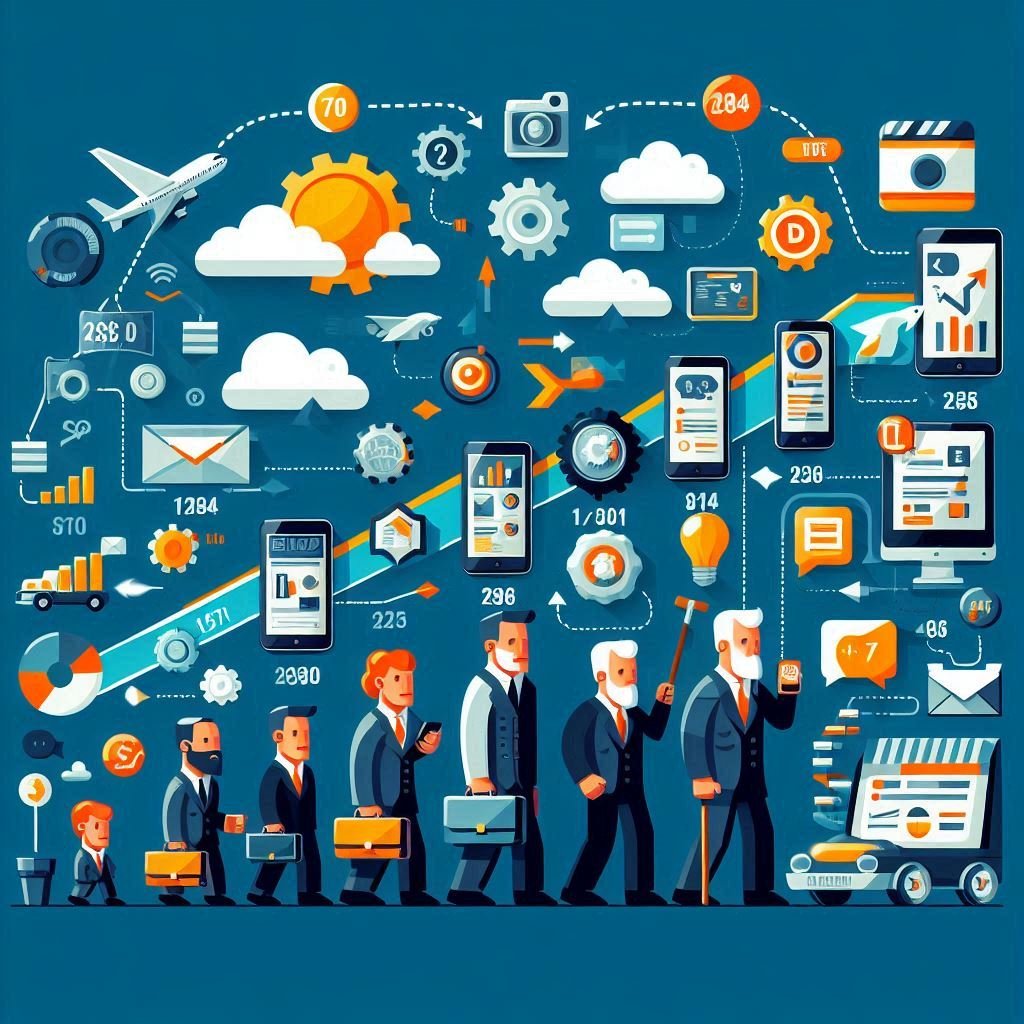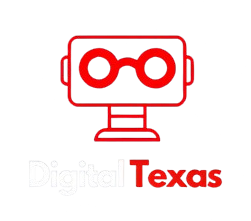The Evolution of Marketing From Traditional to Digital Infographic
Marketing has always been about connecting with people, but the way businesses achieve this has evolved dramatically over time. This infographic highlights the journey of marketing from traditional methods to modern digital strategies. Let’s explore how this transformation has shaped the way brands engage with customers.
1. The Traditional Marketing Era (The Evolution of Marketing From Traditional to Digital Infographic)
Before the rise of the internet, businesses relied on traditional marketing techniques to reach customers.
Key Features of Traditional Marketing:
- Print Advertising: Newspapers, magazines, and brochures were common tools for promotion.
- Broadcast Media: TV and radio were powerful platforms to reach large audiences.
- Outdoor Advertising: Billboards, posters, and signs made products visible to passersby.
- Direct Mail: Flyers and catalogs were sent directly to homes.
While effective, traditional marketing was costly and harder to measure.
2. The Birth of Digital Marketing
With the internet, marketing moved online, creating more personalized and cost-effective strategies for businesses.
Key Developments in Digital Marketing:
- Search Engines: Google allowed businesses to use SEO to appear in search results.
- Email Marketing: Companies began sending personalized offers and newsletters via email.
- Websites: Websites became the central hub for businesses to showcase their products and services.
Digital marketing helped companies track campaigns more effectively using data.
3. Social Media and Mobile Marketing
In the 2010s, social media and mobile devices became the focal point of marketing.
Key Trends in This Era:
- Social Media Marketing: Platforms like Facebook, Instagram, and Twitter let businesses engage directly with customers.
- Content Marketing: Blogs, videos, and infographics became essential for brand visibility.
- Mobile Optimization: As smartphones grew in popularity, businesses made sure their websites and ads were mobile-friendly.
Social media allowed businesses to engage in real-time conversations with their audience.
4. The Present: Data-Driven and AI-Powered Marketing
Today, marketing is data-driven and powered by AI, offering unprecedented levels of personalization.
Modern Marketing Techniques:
- Personalization: Businesses use customer data to create tailored experiences.
- Influencer Marketing: Collaborating with influencers helps brands connect with specific audiences.
- Chatbots and Automation: AI tools provide instant customer support and automate marketing tasks.
- Video Marketing: Platforms like YouTube and TikTok are essential for brand visibility.
This era focuses on using insights and innovation to build strong customer relationships.
5. What’s Next? The Future of Marketing
As technology advances, marketing will continue to evolve. Here’s a glimpse into the future:
- Augmented Reality (AR): Virtual experiences will allow customers to try products before buying.
- Voice Search Optimization: As voice assistants become more common, businesses will need to adapt.
- Sustainability Marketing: Consumers are increasingly drawn to brands that prioritize environmental and social responsibility.
6. The Role of Data Analytics and Artificial Intelligence
As businesses continue to embrace digital marketing, the role of data analytics and artificial intelligence (AI) becomes increasingly critical. With vast amounts of data generated from various touchpoints—social media, websites, and customer interactions—companies now have the ability to analyze and understand consumer behavior in real-time.
Key Features of Data-Driven Marketing:
- Predictive Analytics: AI can forecast consumer behavior, enabling businesses to adjust their strategies proactively.
- Customer Insights: Data analytics help companies understand customer preferences, making it possible to personalize offerings.
- Targeted Advertising: With advanced algorithms, businesses can target specific audience segments with tailored ads, improving conversion rates.
Data-driven marketing enhances the precision of marketing campaigns and allows businesses to optimize their efforts for better outcomes.
7. The Rise of Omnichannel Marketing
In today’s digital landscape, customers expect seamless experiences across all channels, whether they are browsing a website, interacting on social media, or shopping in-store. This shift has led to the rise of omnichannel marketing—an approach that integrates all marketing channels and touchpoints for a unified customer experience.
Key Elements of Omnichannel Marketing:
- Consistent Messaging: Whether on social media, email, or in-store, businesses maintain the same message across all platforms.
- Cross-Channel Shopping: Customers can interact with a brand on multiple devices and platforms, often without interruption in their journey.
- Personalized Interactions: Businesses track customers across channels to provide consistent, personalized experiences.
Omnichannel marketing enables brands to maintain a continuous dialogue with their customers and create a more holistic, satisfying customer experience.
8. The Influence of User-Generated Content (UGC)
User-generated content (UGC) is one of the most influential marketing trends in recent years. Brands are leveraging content created by their customers, such as photos, videos, reviews, and social media posts, to promote their products or services.
Why UGC is Powerful:
- Authenticity: Consumers trust content created by other consumers more than traditional advertising.
- Engagement: UGC encourages customers to interact with brands and participate in their campaigns.
- Cost-Effective: Brands can reduce advertising costs by relying on UGC, which is often shared for free by loyal customers.
As social proof becomes an essential part of the decision-making process, businesses are finding new ways to incorporate UGC into their marketing strategies.
9. Influencer Marketing: Building Trust and Reach
Influencer marketing continues to be a dominant strategy for businesses, especially in the digital age. By partnering with influencers who have a strong presence on platforms like Instagram, TikTok, and YouTube, companies can tap into new audiences and build credibility.
Key Benefits of Influencer Marketing:
- Trust: Influencers have established trust with their followers, making their endorsements more authentic.
- Reach: Brands can access niche markets through influencers with highly targeted audiences.
- Engagement: Influencers encourage direct interaction with their followers, helping brands build relationships.
In the coming years, influencer marketing will continue to evolve, with a focus on micro and nano influencers who offer more intimate and engaged audiences.
10. Interactive and Immersive Experiences
The future of marketing lies in creating interactive and immersive experiences for consumers. With technologies like Augmented Reality (AR) and Virtual Reality (VR) becoming more accessible, brands are experimenting with new ways to engage customers.
Examples of Interactive Marketing:
- Virtual Try-Ons: AR allows customers to try on products like clothes, makeup, or eyewear virtually.
- Immersive Ads: VR provides unique opportunities for creating immersive brand experiences, allowing customers to “step into” a brand’s world.
- Gamification: Adding game-like elements to marketing campaigns can increase engagement and customer loyalty.
Interactive experiences foster deeper connections between brands and customers, driving brand awareness and loyalty.
Infographic: Marketing Evolution Timeline
| Era | Methods | Focus |
|---|---|---|
| Traditional Marketing | Print, TV, Radio, Billboards | Mass Reach |
| Early Digital Marketing | Websites, Email, SEO | Online Presence |
| Social Media Marketing | Social Platforms, Content | Engagement & Interaction |
| Data-Driven Marketing | Personalization, AI, Video | Insights & Relationships |
| Future Marketing | AR, Voice, Sustainability | Innovation & Responsibility |
Conclusion
The evolution of marketing from traditional methods to digital strategies has been a dynamic and transformative journey, reshaping how businesses engage with their audiences. From the early days of print, radio, and television advertising to the sophisticated, data-driven campaigns of today, marketing has constantly adapted to the changing needs and preferences of consumers. The shift from traditional to digital marketing is more than just a change in platforms; it’s a fundamental change in how brands communicate, engage, and build relationships with their customers.
As businesses moved into the digital era, they began to leverage the internet’s reach, with early digital marketing methods like websites, SEO, and email marketing offering more direct and measurable interactions than traditional media ever could. This was the beginning of the Evolution of Marketing From Traditional to Digital Infographic, a visual journey that encapsulates how marketing evolved in response to technological advancements and shifting consumer behaviors. This infographic illustrates the key milestones and transitions, providing insight into how each phase of marketing development built on the last, enabling brands to reach, engage, and retain customers more effectively.
Today, digital marketing is defined by data, automation, and personalized experiences. The digital transformation has allowed businesses to track every touchpoint with customers and use this data to craft personalized marketing messages that feel relevant and timely. The rise of social media marketing, content marketing, and mobile optimization in the 2010s set the stage for the present era, where artificial intelligence (AI) and machine learning are taking the lead. Through AI-powered tools like chatbots, predictive analytics, and personalized content, businesses can now engage customers on an individual level in a way that was unimaginable in the traditional marketing era.
The Evolution of Marketing From Traditional to Digital Infographic also highlights the growing importance of real-time engagement and the increasing role of video marketing on platforms like YouTube and TikTok. As the world becomes more connected and mobile-first, marketers are focusing on creating experiences that capture the consumer’s attention quickly and effectively, leading to higher engagement rates and a more interactive relationship between businesses and their audiences.

Looking to the future, the evolution of marketing will be driven by innovations like augmented reality (AR), voice search optimization, and an even stronger emphasis on sustainability marketing. Consumers are becoming more aware of the impact that brands have on the environment and society, and they are more likely to support companies that align with their values. Brands that can integrate these innovations into their marketing strategies while maintaining ethical practices and transparency will be well-positioned to thrive in the future.
The Evolution of Marketing From Traditional to Digital Infographic serves as a useful tool to understand the phases of marketing’s evolution and offers valuable insights into how businesses can adapt to stay relevant in the rapidly changing marketing landscape. By embracing technology, leveraging data, and focusing on personalization, marketers can build stronger, more authentic relationships with their audiences, which ultimately leads to better customer loyalty and business growth.
As we continue to move forward, one thing is certain: the future of marketing will be shaped by an ever-expanding toolkit of digital innovations, but it will always remain rooted in the human desire to connect, engage, and create meaningful experiences. Businesses that can navigate this ongoing transformation while keeping their customers at the center of their strategies will be the ones that succeed in an increasingly competitive digital world.
In conclusion, the Evolution of Marketing From Traditional to Digital Infographic is a testament to the enduring adaptability of marketing as a discipline. It highlights not only the technological advancements that have reshaped how businesses reach and communicate with their customers but also the ongoing importance of creating authentic, personalized experiences that resonate with today’s consumers. This journey of transformation continues, and as new technologies emerge, the marketing landscape will evolve once again—perhaps in ways we can’t yet imagine, but always with the goal of better connecting brands and consumers in a meaningful and effective way.
Top 5 Best marketing agencies & best marketing companies Appointment Services




